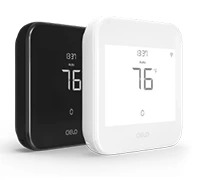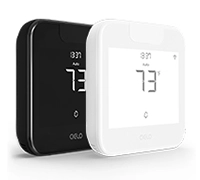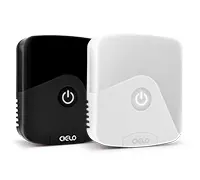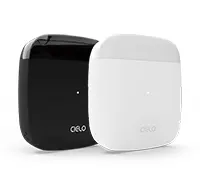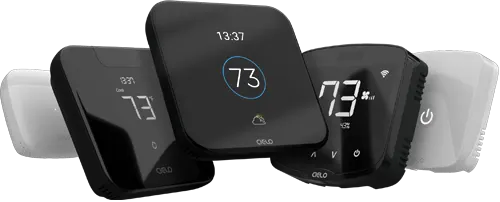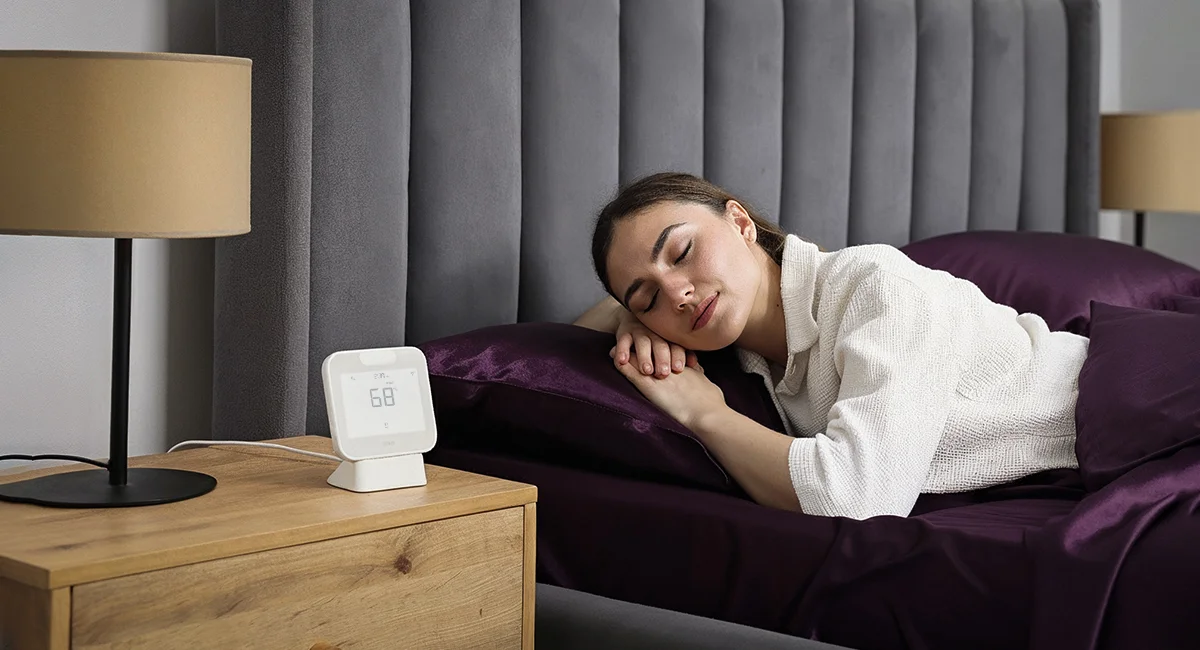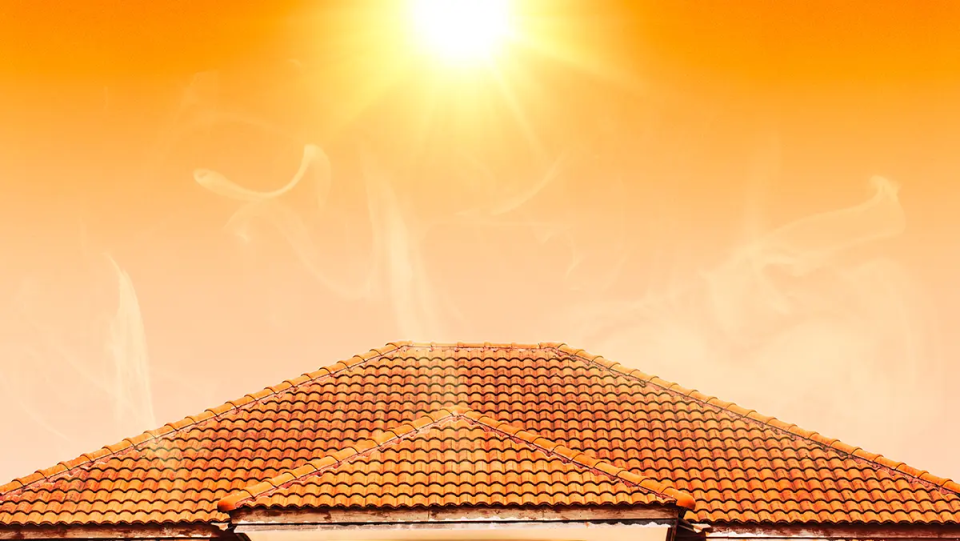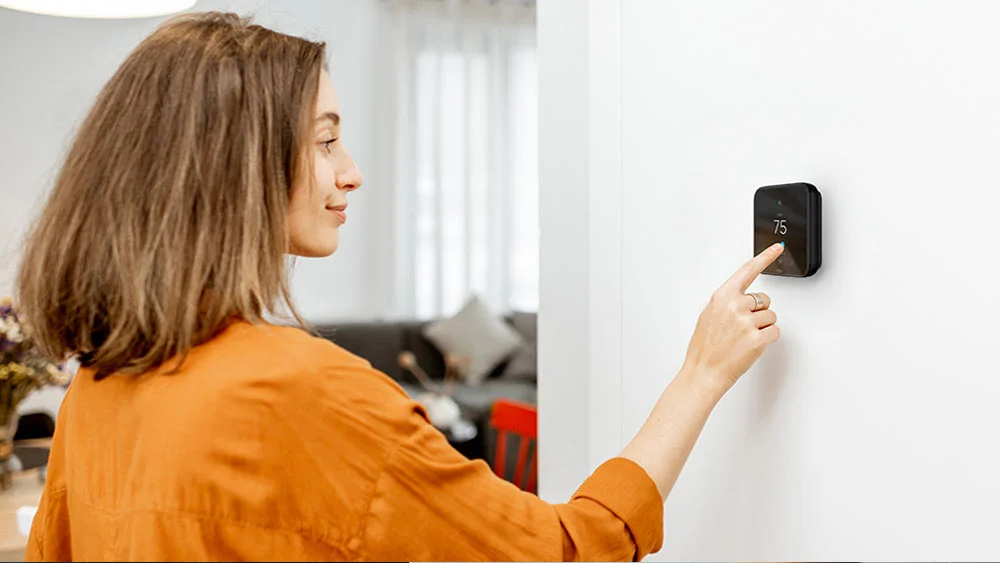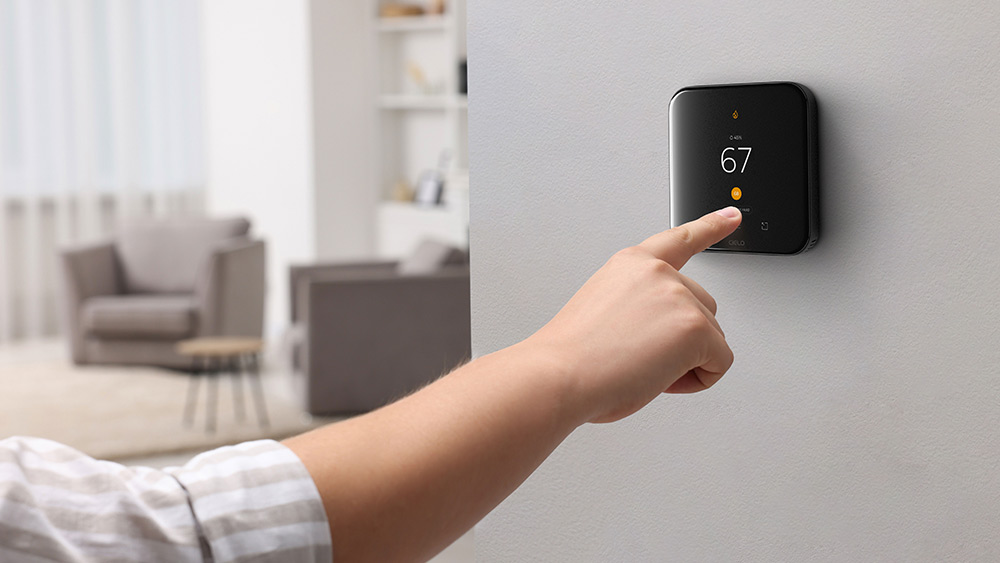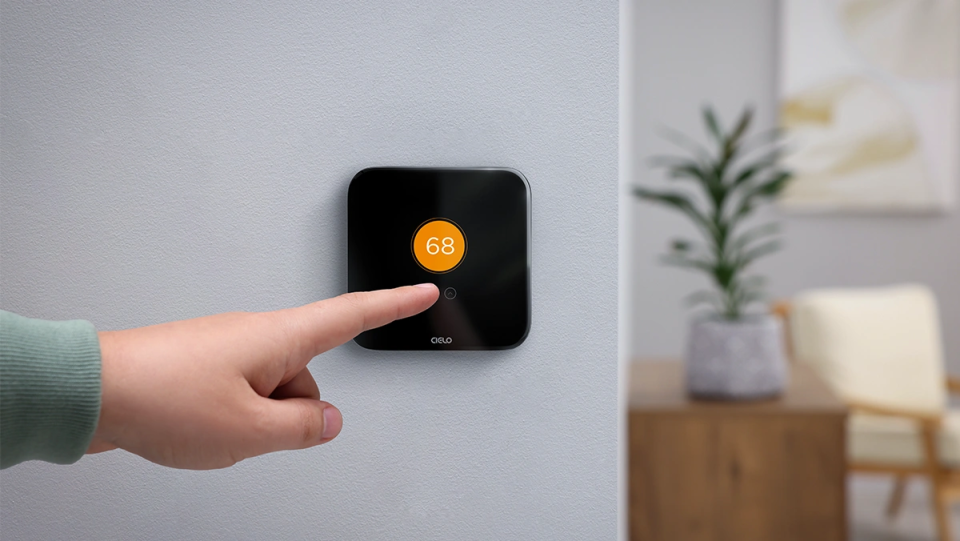
Key Takeaways
- The best thermostat setting in winter for energy savings is 68°F.
- Smart thermostats optimize comfort and cut energy waste by automating temperature control.
- Regular HVAC upkeep boosts efficiency and maximizes savings.
Did you know your home’s heating and cooling make up nearly 43% of your total energy use? That’s almost half of your utility bill driven by temperature control alone. The good news? Even a small thermostat adjustment – just a few degrees – can make a big difference in how much energy you use and how much you save. A little change in temperature can go a long way toward lowering costs and boosting efficiency.
Let’s take a look at the best temperature to set your thermostat in winter to save money on heating bills.
Best Winter Thermostat Temperature: 68°F
The closer your indoor temperature is to the outdoor temperature, the less you’ll spend on heating/cooling. That’s why thermostat optimization is required. By thoughtfully adjusting your thermostat settings in winter, you can stay comfortable without wasting energy.
According to the US Department of Energy, the most efficient indoor temperature during winter is 68°F while you’re at home and awake.
💡 Quick Tip: If you lower your thermostat by 7 – 10°F for at least 8 hours a day, you can save up to 10% annually on energy costs.
Why 68°F Is the Best Winter Thermostat Temperature?
At 68°F, your heating system runs efficiently enough to offset natural heat loss through walls and windows, without overheating your space. So why is 68°F so effective?
When temperatures drop, your home constantly loses heat through walls, windows, and doors. At 68°F, your heating system provides just enough warmth to balance that natural heat loss. You stay comfortable, and your system doesn’t have to work overtime, meaning you’re not wasting energy or money trying to keep the house toasty.
It’s also the temperature that feels “just right” for most people. Studies show that 68°F strikes the perfect balance between cozy and cool. It’s warm enough that you don’t need to bundle up in layers, yet not so hot that your home starts to feel stuffy. In short, it’s the comfort zone where efficiency and coziness meet.
A common misconception is that lowering the thermostat when you’re away forces your heating system to work harder later, canceling any savings, but that’s not true. When your home temperature drops below its normal level, it actually loses heat to the outside more slowly. The longer it stays at this lower temperature, the less total energy it loses. By lowering your thermostat during inactive hours and returning it to 68°F when needed, you can maintain comfort while significantly reducing your overall energy use.
How Smart Thermostats Maximize Your Savings?
Non-programmable thermostats require you to change settings manually every time. Smart thermostats rely on intelligence. The smart thermostat for central HVAC or smart thermostat for mini-splits automates energy savings by following your routine, adjusting the home climate, and even detecting when you’re away through smart features like geofencing. Smart thermostat brings automation, insights, and control into one simple app.
Equip your HVAC system with smart features and achieve the perfect balance between comfort & savings.
Learn more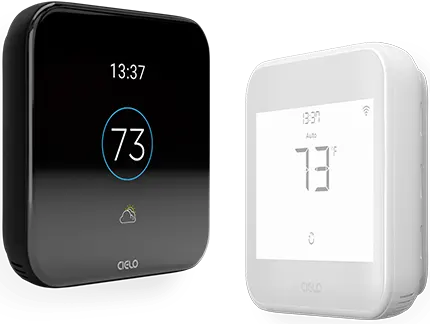
- Smart Scheduling: With this feature, you can set schedules that fit your lifestyle. Some smart thermostats even learns your patterns over time, adjusting automatically to keep you comfortable when you’re home and save energy when you’re not.
- Geofencing: Adjusts your AC setting when you leave or return a predefined area.
- Energy Usage Insights: Track HVAC usage to identify heating patterns and discover opportunities for savings.
Energy-Saving Benefits of Smart Heating Habits
Your heating system doesn’t just warm the air; it constantly compensates for heat escaping your home. The wider the indoor-outdoor temperature gap, the harder it has to work. That’s why keeping your setpoint moderate and lowering it strategically can dramatically cut costs.
Here’s how small shifts can lead to big savings:
At Night
The ideal sleeping temperature is between 60°F and 68°F. Your body temperature gets lower as you sleep, so you need some extra warmth during the night. Since you’re tucked under blankets, you can comfortably lower your thermostat by 3–5°F overnight. This small adjustment reduces energy use while keeping you just as warm and comfortable.
When You’re Away
Set your thermostat back by 7–10°F during those hours. Smart thermostats can automatically restore warmth before you return, so your comfort isn’t compromised.
When You’re Home
Keep the temperature consistent around 68°F. Avoid frequent manual changes as they might lead to unnecessary heating cycles that waste energy.
Factors That Affect Energy Efficiency in Winter
While 68°F works for most homes, not all houses are created equal. Consider these variables while analyzing the energy efficiency:
-
Home Insulation & Sealing
Poor insulation means heat escapes faster. Sealing gaps, adding weatherstripping, and insulating attics or walls can help maintain warmth even at lower setpoints.
-
Thermostat Placement
Keep your thermostat away from direct sunlight or heat, as it may misread the room temperature and trigger unnecessary heating cycles.
-
Setpoint and Room Temperature
Your setpoint temperature is the value you program on your thermostat – your desired indoor temperature. The room temperature is the actual current condition that your HVAC system works to achieve. The greater the difference between your setpoint and room temperature, the harder your system must work to reach that target.
A balanced approach works best: maintain a consistent, comfortable setpoint during occupied hours and use small, strategic setbacks when the space is empty. Smart thermostats with features like geofencing or scheduling automatically manage these HVAC adjustments to maintain comfort without wasting energy.
-
HVAC Maintenance
Even the best thermostat settings can only go so far if your HVAC system isn’t operating efficiently. Heat loss, dirty filters, or inconsistent airflow can quietly undo all your energy-saving efforts.
A truly energy-efficient home requires both a smart thermostat and a well-maintained HVAC system working in sync.
- Regularly clean and replace your air filters. Cielo mini-split thermostats have a filter-tracking feature that sends cleanliness reminders to help you stay on top of maintenance.
- Inspect ducts for leaks that allow warm air to escape.
- Scheduling professional HVAC maintenance can help optimize energy use, lower heating bills, and ensure your system performs at peak efficiency.
Your best choice to make any mini-split, window,
or portable AC smart. Enhance your comfort and savings.
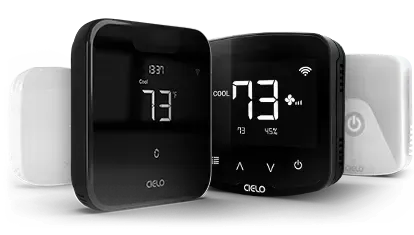
Wrapping it Up
The best temperature to set your thermostat in winter is 68°F when you’re home, and 7–10°F lower when you’re asleep or away. But beyond that number lies a smarter way to manage comfort through automation and efficient heating. By combining thoughtful temperature adjustments with regular HVAC maintenance, you can reduce heating costs without compromising comfort.
For even greater efficiency, consider upgrading to a smart thermostat. With features like scheduling, geofencing, and energy insights, it automatically fine-tunes your indoor climate to match your lifestyle, helping you stay cozy, cut energy waste, and save money all winter long.
Frequently Asked Questions
Is 65°F Too Low in Winters?
Setting your thermostat to 65°F can help reduce heating costs, particularly when you’re away or asleep. However, keeping your home this cool for extended periods may be uncomfortable for some, especially older adults or those with health conditions. For a balance between comfort and savings, aim to keep your home around 68°F when occupied and lower it by 7–10°F when you’re away.
How Should I Set My Thermostat for Year-Round Energy Savings?
Use a programmable or smart thermostat that automatically adjusts the temperature based on your schedule. Modern smart models can follow your routines, switching to energy-saving settings when you’re away and ensuring comfort when you’re home. For even more control, connect a Wi-Fi thermostat like Cielo Smart Thermostat to your smartphone through the app, allowing you to adjust settings anytime, anywhere, helping you stay comfortable and save energy all year long.
What Is the Best Temperature for a Thermostat in the Summer?
The ideal thermostat setting for summer is 78°F when you’re at home and 85°F-90°F when away. This keeps you comfortable while helping reduce cooling costs.
